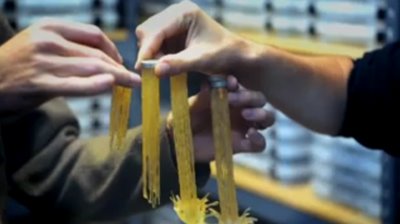![A wireframe mesh figure design [Source: Amazon]](https://fabbaloo.com/wp-content/uploads/2020/05/image-asset_img_5eb067f0d6037.jpg)
A wireframe mesh figure design [Source: Amazon]
This week’s selection is “The Pushing Points Topology Workbook” by William C. Vaughan.
If you’re using a 3D printer, you’re using a mesh. That’s a method of representing a 3D object using a mathematical description of the shape.
It’s done by subdividing the surface into a series of smaller pieces, each of which could be a flat plane, but at least is vastly simpler to digitally describe than the entire object. Complex 3D models can consist of a very large number of subdivided units, even over a million in some cases.
These meshes are usually composed of simple rectangular or triangular pieces. If triangles, then the mesh components are perfectly flat: three points define a plane, after all.
Triangular meshes are most often used in 3D printing, simply because the popular .STL format uses them. But many other 3D CAD programs use meshes that are rectangular.
These meshes can be manipulated in various ways. One common approach is to simplify a mesh by joining some adjacent elements together. This is most often done to lower the amount of items to process: 3D operations on a very large mesh can easily bury even a powerful processor.
Subdivision is another common operation, where a “coarse” mesh is subdivided into smaller units to allow for additional detail. This is most typically done when performing 3D sculpting: tweaks to a surface require additional resolution.
There are many other operations possible with meshes, and it’s actually an entire world of activity that could be learned by 3D designers.
This book provides exercises in mesh manipulation. They explain:
“The Pushing Points Topology Workbook is a software agnostic guide that teaches you the foundation of SubD topology. There are over sixty exercises packed with loads of tips, tricks and techniques designed to teach you how to manage the topology of your meshes. Throughout the book you will also find many images of wireframe rendered assets and their topology that you can study for reference. This book doesn’t show you how to build a car, character or creature. Instead, it teaches you the foundation of SubD topology, so you can construct ANY SubD asset with clean polygon flow.”
While that may sound a bit obscure, it can be of immense value when you suddenly find yourself facing an impossible mesh processing scenario. More knowledge of mesh operations is always a good idea.
Via Amazon

